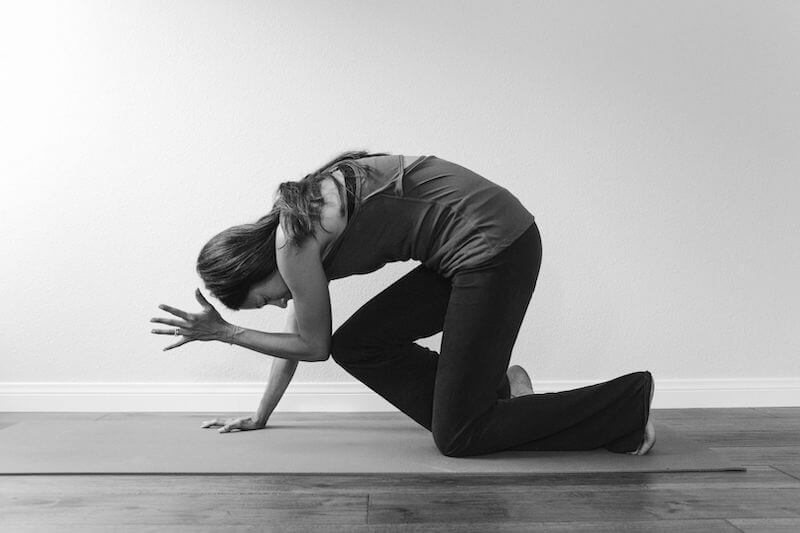
Layers of grief continue to surface as COVID presses on. “New losses pull at old losses, so there are many layers that can be surfacing now,” said Monique Minahan, author of The Grief Practice and polyvagal-based, trauma-informed yoga teacher based in Encinitas, California.
In addition to the humans who lost loved ones to illness and COVID this past year and a half, Minahan adds this: “Many of us lost layers of human connection, jobs, businesses, dreams, and a sense of internal and external safety; some more than others depending on our level of privilege.”
Minahan’s own journey in grief is tied to loss as a young adult. She became a widow at 25, left religion, and a few years later, discovered yoga. She credits the self-discovery in the practice for taking her from surviving to thriving, which inspired her to combine her grief experience with yoga to help others.
Here’s what Minahan wants you to know if you are grappling with grief and wondering if it is, in fact, grief.
“Grief doesn’t necessarily manifest in tears, depression, withdrawal, or in ways you might typically expect. “Grief can feel itchy, smooth, rocky, bubbly, burning, constricted, paralyzing, sticky, strong, smooth, energizing, heavy, and more. We might feel these sensations in our organs, muscles or skin.”
When left unattended or ignored, grief creates tension patterns in the body, such as tightness in the chest or challenges with breathing. This state can affect our body systems, possibly creating discomfort or disease, according to many medical journals and studies. But, there’s hope. “Hope in the body moves along the same physiological networks as grief,” she adds. The National Institutes of Health found that, among other therapies, movement supports healing.
National Grief Awareness Day is August 30th, so we asked Minahan to explain what we might be experiencing together. Everyone grieves differently, for different reasons, but we can all benefit from more awareness and knowledge of this dimension of the human experience. She also gave us this video to help you with a short practice.
Minahan shares how to handle the stigma of grief, the threats we can’t see, and what we have to do before we can process grief at all.
Christine Chen: Is COVID-related grief a public health crisis?
Monique Minahan: Labeling grief a public health crisis makes a normal human experience feel like an abnormal one, when really it happens to us all. We love, we lose, we survive. Grief is painful, hard, and we’re not meant to endure it alone, but it is not a public health crisis.
CC: Is collective loss normal?
MM: Yes. Collective and public tragedy pulls the legs out from under our sense of normalcy, sobering and softening up even the most hardcore among us. Unlike personal loss, collective loss does not hide from public view. It is harder to turn away, to ignore it, to stuff it down.
CC: What is the stigma of grief, and why is it important to acknowledge a stigma at all?
MM: Stigma is the negative or discriminating attitude that makes grief something "those" people have instead of pulling grief into the fold of our undeniable and often painful humanity. It makes humans feel more alone, isolated, misunderstood and unaccompanied in what is already an overwhelming and devastating experience. Many people retreat rather than try to fight the spoken and unspoken societal stigma they feel from family, co-workers, and their communities.
CC: Is this stigma the same across cultures?
MM: No. Many cultures have beautiful, acknowledging practices around individual and collective loss. Outside the United States, cultural rituals around death and loss often recruit community support, embodied expression of love and pain, and ongoing acknowledgement of grief and the humans who have lost.
CC: Why is grief in the body misunderstood?
MM: We live in a top-down society that favors the intelligence of the mind over the intelligence of the body from the neck down. Thanks to polyvagal theory we now have beautiful science to confirm the soulful, embodied experience of grief we have always sensed as humans. For many people this is the only way they will acknowledge the intelligence of their bodies and begin to listen.
CC: How do our bodies respond to threats that we can see versus can’t see?
MM: Threat registers in our bodies through a subcognitive process called neuroception. The same cascade of protective biological responses ensue for a seen or unseen threat; the initial alert or startle, trying to orient or see the threat, fighting or fleeing, and then freezing or collapsing. Because we can't fight or run away from unseen threats such as grief or COVID, the energy that is mobilized often has nowhere to go and needs to be processed in other ways, often therapeutically.
CC: What comes before grief in this cycle before we can process grief?
MM: Grief can be hard to access when we are trying to survive or are in shock. This is why it can be helpful to process the trauma first when we have experienced traumatic loss and grief. Many layers of grief require a container of softness to flow, which the body feels into when it's ready. This is why we may grieve decades later or why new loss may re-open old loss.
CC: What can we lean into when grief is hard?
MM: Community is our biggest resource and our first line of defense when tragedy hits, physically and emotionally. If other humans are there to support us it changes the way we can carry our pain. If no one is there for us our biology drops us into other lines of defense and self-preservation.
CC: If grief is different for individuals based on what we lost, what kind of range might bodies experience?
MM: Many people experience grief as a sense of contraction in their chests, bellies, posture, and behavior. This is a very protective and normal response that does not need to be changed or rushed, simply supported. These are also the same places we can sense softening and ease in our bodies when we feel supported, welcomed and accompanied.
Resources
The Grief Practice
Additional Support
Griefshare: Find a Support Group
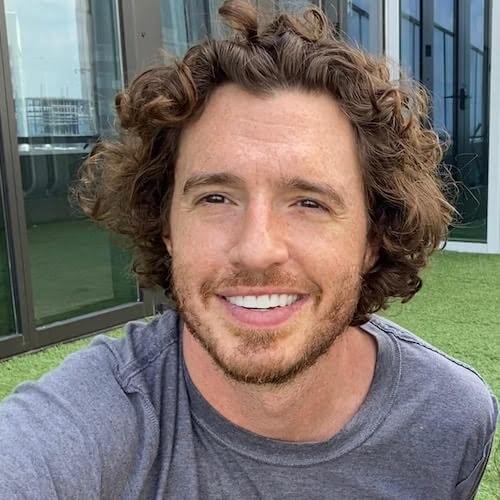
“Remembering to be as self compassionate as I can and praying to the divine that we're all a part of.”
–Aaron
“Prayer, reading, meditation, walking.”
–Karen
“Erratically — which is an ongoing stream of practice to find peace.”
–Charles
“Try on a daily basis to be kind to myself and to realize that making mistakes is a part of the human condition. Learning from our mistakes is a journey. But it starts with compassion and caring. First for oneself.”
–Steve
“Physically: aerobic exercise, volleyball, ice hockey, cycling, sailing. Emotionally: unfortunately I have to work to ‘not care’ about people or situations which may end painfully. Along the lines of ‘attachment is the source of suffering’, so best to avoid it or limit its scope. Sad though because it could also be the source of great joy. Is it worth the risk?“
–Rainer
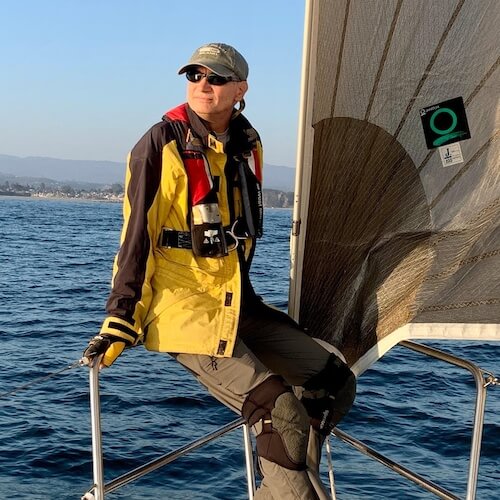

“It's time for my heart to be nurtured on one level yet contained on another. To go easy on me and to allow my feelings to be validated, not judged harshly. On the other hand, to let the heart rule with equanimity and not lead the mind and body around like a master.”
–Suzanne
“I spend time thinking of everything I am grateful for, and I try to develop my ability to express compassion for myself and others without reservation. I take time to do the things I need to do to keep myself healthy and happy. This includes taking experiential workshops, fostering relationships, and participating within groups which have a similar interest to become a more compassionate and fulfilled being.“
–Peter
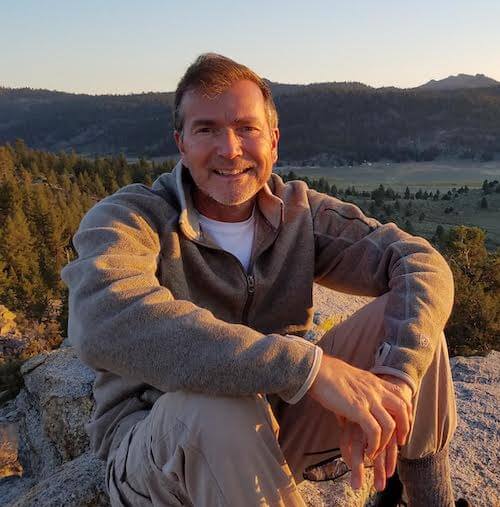
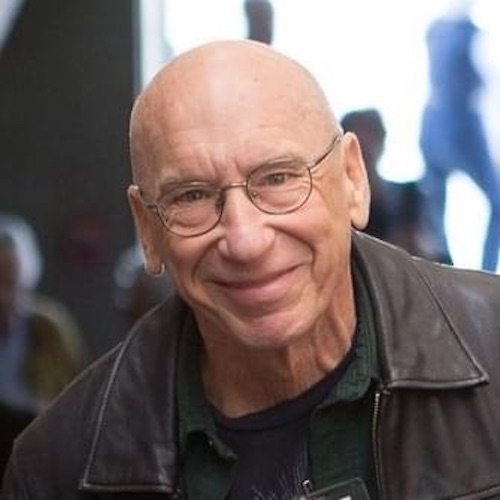
“Self-forgiveness for my own judgments. And oh yeah, coming to Esalen.”
–David B.
“Hmm, this is a tough one! I guess I take care of my heart through fostering relationships with people I feel connected to. Spending quality time with them (whether we're on the phone, through messages/letters, on Zoom, or in-person). Being there for them, listening to them, sharing what's going on with me, my struggles and my successes... like we do in the Esalen weekly Friends of Esalen Zoom sessions!”
–Lori

“I remind myself in many ways of the fact that " Love is all there is!" LOVE is the prize and this one precious life is the stage we get to learn our lessons. I get out into nature, hike, camp, river kayak, fly fish, garden, I create, I dance (not enough!), and I remain grateful for each day, each breath, each moment. Being in the moment, awake, and remembering the gift of life and my feeling of gratitude for all of creation.”
–Steven
“My physical heart by limiting stress and eating a heart-healthy diet. My emotional heart by staying in love with the world and by knowing that all disappointment and loss will pass.“
–David Z.
Today, September 29, is World Heart Day. Strike up a conversation with your own heart and as you feel comfortable, encourage others to do the same. As part of our own transformations and self-care, we sometimes ask for others to illuminate and enliven our hearts or speak our love language.
What if we could do this for ourselves too, even if just for today… or to start a heart practice, forever?

Layers of grief continue to surface as COVID presses on. “New losses pull at old losses, so there are many layers that can be surfacing now,” said Monique Minahan, author of The Grief Practice and polyvagal-based, trauma-informed yoga teacher based in Encinitas, California.
In addition to the humans who lost loved ones to illness and COVID this past year and a half, Minahan adds this: “Many of us lost layers of human connection, jobs, businesses, dreams, and a sense of internal and external safety; some more than others depending on our level of privilege.”
Minahan’s own journey in grief is tied to loss as a young adult. She became a widow at 25, left religion, and a few years later, discovered yoga. She credits the self-discovery in the practice for taking her from surviving to thriving, which inspired her to combine her grief experience with yoga to help others.
Here’s what Minahan wants you to know if you are grappling with grief and wondering if it is, in fact, grief.
“Grief doesn’t necessarily manifest in tears, depression, withdrawal, or in ways you might typically expect. “Grief can feel itchy, smooth, rocky, bubbly, burning, constricted, paralyzing, sticky, strong, smooth, energizing, heavy, and more. We might feel these sensations in our organs, muscles or skin.”
When left unattended or ignored, grief creates tension patterns in the body, such as tightness in the chest or challenges with breathing. This state can affect our body systems, possibly creating discomfort or disease, according to many medical journals and studies. But, there’s hope. “Hope in the body moves along the same physiological networks as grief,” she adds. The National Institutes of Health found that, among other therapies, movement supports healing.
National Grief Awareness Day is August 30th, so we asked Minahan to explain what we might be experiencing together. Everyone grieves differently, for different reasons, but we can all benefit from more awareness and knowledge of this dimension of the human experience. She also gave us this video to help you with a short practice.
Minahan shares how to handle the stigma of grief, the threats we can’t see, and what we have to do before we can process grief at all.
Christine Chen: Is COVID-related grief a public health crisis?
Monique Minahan: Labeling grief a public health crisis makes a normal human experience feel like an abnormal one, when really it happens to us all. We love, we lose, we survive. Grief is painful, hard, and we’re not meant to endure it alone, but it is not a public health crisis.
CC: Is collective loss normal?
MM: Yes. Collective and public tragedy pulls the legs out from under our sense of normalcy, sobering and softening up even the most hardcore among us. Unlike personal loss, collective loss does not hide from public view. It is harder to turn away, to ignore it, to stuff it down.
CC: What is the stigma of grief, and why is it important to acknowledge a stigma at all?
MM: Stigma is the negative or discriminating attitude that makes grief something "those" people have instead of pulling grief into the fold of our undeniable and often painful humanity. It makes humans feel more alone, isolated, misunderstood and unaccompanied in what is already an overwhelming and devastating experience. Many people retreat rather than try to fight the spoken and unspoken societal stigma they feel from family, co-workers, and their communities.
CC: Is this stigma the same across cultures?
MM: No. Many cultures have beautiful, acknowledging practices around individual and collective loss. Outside the United States, cultural rituals around death and loss often recruit community support, embodied expression of love and pain, and ongoing acknowledgement of grief and the humans who have lost.
CC: Why is grief in the body misunderstood?
MM: We live in a top-down society that favors the intelligence of the mind over the intelligence of the body from the neck down. Thanks to polyvagal theory we now have beautiful science to confirm the soulful, embodied experience of grief we have always sensed as humans. For many people this is the only way they will acknowledge the intelligence of their bodies and begin to listen.
CC: How do our bodies respond to threats that we can see versus can’t see?
MM: Threat registers in our bodies through a subcognitive process called neuroception. The same cascade of protective biological responses ensue for a seen or unseen threat; the initial alert or startle, trying to orient or see the threat, fighting or fleeing, and then freezing or collapsing. Because we can't fight or run away from unseen threats such as grief or COVID, the energy that is mobilized often has nowhere to go and needs to be processed in other ways, often therapeutically.
CC: What comes before grief in this cycle before we can process grief?
MM: Grief can be hard to access when we are trying to survive or are in shock. This is why it can be helpful to process the trauma first when we have experienced traumatic loss and grief. Many layers of grief require a container of softness to flow, which the body feels into when it's ready. This is why we may grieve decades later or why new loss may re-open old loss.
CC: What can we lean into when grief is hard?
MM: Community is our biggest resource and our first line of defense when tragedy hits, physically and emotionally. If other humans are there to support us it changes the way we can carry our pain. If no one is there for us our biology drops us into other lines of defense and self-preservation.
CC: If grief is different for individuals based on what we lost, what kind of range might bodies experience?
MM: Many people experience grief as a sense of contraction in their chests, bellies, posture, and behavior. This is a very protective and normal response that does not need to be changed or rushed, simply supported. These are also the same places we can sense softening and ease in our bodies when we feel supported, welcomed and accompanied.
Resources
The Grief Practice
Additional Support
Griefshare: Find a Support Group

“Remembering to be as self compassionate as I can and praying to the divine that we're all a part of.”
–Aaron
“Prayer, reading, meditation, walking.”
–Karen
“Erratically — which is an ongoing stream of practice to find peace.”
–Charles
“Try on a daily basis to be kind to myself and to realize that making mistakes is a part of the human condition. Learning from our mistakes is a journey. But it starts with compassion and caring. First for oneself.”
–Steve
“Physically: aerobic exercise, volleyball, ice hockey, cycling, sailing. Emotionally: unfortunately I have to work to ‘not care’ about people or situations which may end painfully. Along the lines of ‘attachment is the source of suffering’, so best to avoid it or limit its scope. Sad though because it could also be the source of great joy. Is it worth the risk?“
–Rainer


“It's time for my heart to be nurtured on one level yet contained on another. To go easy on me and to allow my feelings to be validated, not judged harshly. On the other hand, to let the heart rule with equanimity and not lead the mind and body around like a master.”
–Suzanne
“I spend time thinking of everything I am grateful for, and I try to develop my ability to express compassion for myself and others without reservation. I take time to do the things I need to do to keep myself healthy and happy. This includes taking experiential workshops, fostering relationships, and participating within groups which have a similar interest to become a more compassionate and fulfilled being.“
–Peter


“Self-forgiveness for my own judgments. And oh yeah, coming to Esalen.”
–David B.
“Hmm, this is a tough one! I guess I take care of my heart through fostering relationships with people I feel connected to. Spending quality time with them (whether we're on the phone, through messages/letters, on Zoom, or in-person). Being there for them, listening to them, sharing what's going on with me, my struggles and my successes... like we do in the Esalen weekly Friends of Esalen Zoom sessions!”
–Lori

“I remind myself in many ways of the fact that " Love is all there is!" LOVE is the prize and this one precious life is the stage we get to learn our lessons. I get out into nature, hike, camp, river kayak, fly fish, garden, I create, I dance (not enough!), and I remain grateful for each day, each breath, each moment. Being in the moment, awake, and remembering the gift of life and my feeling of gratitude for all of creation.”
–Steven
“My physical heart by limiting stress and eating a heart-healthy diet. My emotional heart by staying in love with the world and by knowing that all disappointment and loss will pass.“
–David Z.
Today, September 29, is World Heart Day. Strike up a conversation with your own heart and as you feel comfortable, encourage others to do the same. As part of our own transformations and self-care, we sometimes ask for others to illuminate and enliven our hearts or speak our love language.
What if we could do this for ourselves too, even if just for today… or to start a heart practice, forever?

Layers of grief continue to surface as COVID presses on. “New losses pull at old losses, so there are many layers that can be surfacing now,” said Monique Minahan, author of The Grief Practice and polyvagal-based, trauma-informed yoga teacher based in Encinitas, California.
In addition to the humans who lost loved ones to illness and COVID this past year and a half, Minahan adds this: “Many of us lost layers of human connection, jobs, businesses, dreams, and a sense of internal and external safety; some more than others depending on our level of privilege.”
Minahan’s own journey in grief is tied to loss as a young adult. She became a widow at 25, left religion, and a few years later, discovered yoga. She credits the self-discovery in the practice for taking her from surviving to thriving, which inspired her to combine her grief experience with yoga to help others.
Here’s what Minahan wants you to know if you are grappling with grief and wondering if it is, in fact, grief.
“Grief doesn’t necessarily manifest in tears, depression, withdrawal, or in ways you might typically expect. “Grief can feel itchy, smooth, rocky, bubbly, burning, constricted, paralyzing, sticky, strong, smooth, energizing, heavy, and more. We might feel these sensations in our organs, muscles or skin.”
When left unattended or ignored, grief creates tension patterns in the body, such as tightness in the chest or challenges with breathing. This state can affect our body systems, possibly creating discomfort or disease, according to many medical journals and studies. But, there’s hope. “Hope in the body moves along the same physiological networks as grief,” she adds. The National Institutes of Health found that, among other therapies, movement supports healing.
National Grief Awareness Day is August 30th, so we asked Minahan to explain what we might be experiencing together. Everyone grieves differently, for different reasons, but we can all benefit from more awareness and knowledge of this dimension of the human experience. She also gave us this video to help you with a short practice.
Minahan shares how to handle the stigma of grief, the threats we can’t see, and what we have to do before we can process grief at all.
Christine Chen: Is COVID-related grief a public health crisis?
Monique Minahan: Labeling grief a public health crisis makes a normal human experience feel like an abnormal one, when really it happens to us all. We love, we lose, we survive. Grief is painful, hard, and we’re not meant to endure it alone, but it is not a public health crisis.
CC: Is collective loss normal?
MM: Yes. Collective and public tragedy pulls the legs out from under our sense of normalcy, sobering and softening up even the most hardcore among us. Unlike personal loss, collective loss does not hide from public view. It is harder to turn away, to ignore it, to stuff it down.
CC: What is the stigma of grief, and why is it important to acknowledge a stigma at all?
MM: Stigma is the negative or discriminating attitude that makes grief something "those" people have instead of pulling grief into the fold of our undeniable and often painful humanity. It makes humans feel more alone, isolated, misunderstood and unaccompanied in what is already an overwhelming and devastating experience. Many people retreat rather than try to fight the spoken and unspoken societal stigma they feel from family, co-workers, and their communities.
CC: Is this stigma the same across cultures?
MM: No. Many cultures have beautiful, acknowledging practices around individual and collective loss. Outside the United States, cultural rituals around death and loss often recruit community support, embodied expression of love and pain, and ongoing acknowledgement of grief and the humans who have lost.
CC: Why is grief in the body misunderstood?
MM: We live in a top-down society that favors the intelligence of the mind over the intelligence of the body from the neck down. Thanks to polyvagal theory we now have beautiful science to confirm the soulful, embodied experience of grief we have always sensed as humans. For many people this is the only way they will acknowledge the intelligence of their bodies and begin to listen.
CC: How do our bodies respond to threats that we can see versus can’t see?
MM: Threat registers in our bodies through a subcognitive process called neuroception. The same cascade of protective biological responses ensue for a seen or unseen threat; the initial alert or startle, trying to orient or see the threat, fighting or fleeing, and then freezing or collapsing. Because we can't fight or run away from unseen threats such as grief or COVID, the energy that is mobilized often has nowhere to go and needs to be processed in other ways, often therapeutically.
CC: What comes before grief in this cycle before we can process grief?
MM: Grief can be hard to access when we are trying to survive or are in shock. This is why it can be helpful to process the trauma first when we have experienced traumatic loss and grief. Many layers of grief require a container of softness to flow, which the body feels into when it's ready. This is why we may grieve decades later or why new loss may re-open old loss.
CC: What can we lean into when grief is hard?
MM: Community is our biggest resource and our first line of defense when tragedy hits, physically and emotionally. If other humans are there to support us it changes the way we can carry our pain. If no one is there for us our biology drops us into other lines of defense and self-preservation.
CC: If grief is different for individuals based on what we lost, what kind of range might bodies experience?
MM: Many people experience grief as a sense of contraction in their chests, bellies, posture, and behavior. This is a very protective and normal response that does not need to be changed or rushed, simply supported. These are also the same places we can sense softening and ease in our bodies when we feel supported, welcomed and accompanied.
Resources
The Grief Practice
Additional Support
Griefshare: Find a Support Group

“Remembering to be as self compassionate as I can and praying to the divine that we're all a part of.”
–Aaron
“Prayer, reading, meditation, walking.”
–Karen
“Erratically — which is an ongoing stream of practice to find peace.”
–Charles
“Try on a daily basis to be kind to myself and to realize that making mistakes is a part of the human condition. Learning from our mistakes is a journey. But it starts with compassion and caring. First for oneself.”
–Steve
“Physically: aerobic exercise, volleyball, ice hockey, cycling, sailing. Emotionally: unfortunately I have to work to ‘not care’ about people or situations which may end painfully. Along the lines of ‘attachment is the source of suffering’, so best to avoid it or limit its scope. Sad though because it could also be the source of great joy. Is it worth the risk?“
–Rainer


“It's time for my heart to be nurtured on one level yet contained on another. To go easy on me and to allow my feelings to be validated, not judged harshly. On the other hand, to let the heart rule with equanimity and not lead the mind and body around like a master.”
–Suzanne
“I spend time thinking of everything I am grateful for, and I try to develop my ability to express compassion for myself and others without reservation. I take time to do the things I need to do to keep myself healthy and happy. This includes taking experiential workshops, fostering relationships, and participating within groups which have a similar interest to become a more compassionate and fulfilled being.“
–Peter


“Self-forgiveness for my own judgments. And oh yeah, coming to Esalen.”
–David B.
“Hmm, this is a tough one! I guess I take care of my heart through fostering relationships with people I feel connected to. Spending quality time with them (whether we're on the phone, through messages/letters, on Zoom, or in-person). Being there for them, listening to them, sharing what's going on with me, my struggles and my successes... like we do in the Esalen weekly Friends of Esalen Zoom sessions!”
–Lori

“I remind myself in many ways of the fact that " Love is all there is!" LOVE is the prize and this one precious life is the stage we get to learn our lessons. I get out into nature, hike, camp, river kayak, fly fish, garden, I create, I dance (not enough!), and I remain grateful for each day, each breath, each moment. Being in the moment, awake, and remembering the gift of life and my feeling of gratitude for all of creation.”
–Steven
“My physical heart by limiting stress and eating a heart-healthy diet. My emotional heart by staying in love with the world and by knowing that all disappointment and loss will pass.“
–David Z.
Today, September 29, is World Heart Day. Strike up a conversation with your own heart and as you feel comfortable, encourage others to do the same. As part of our own transformations and self-care, we sometimes ask for others to illuminate and enliven our hearts or speak our love language.
What if we could do this for ourselves too, even if just for today… or to start a heart practice, forever?